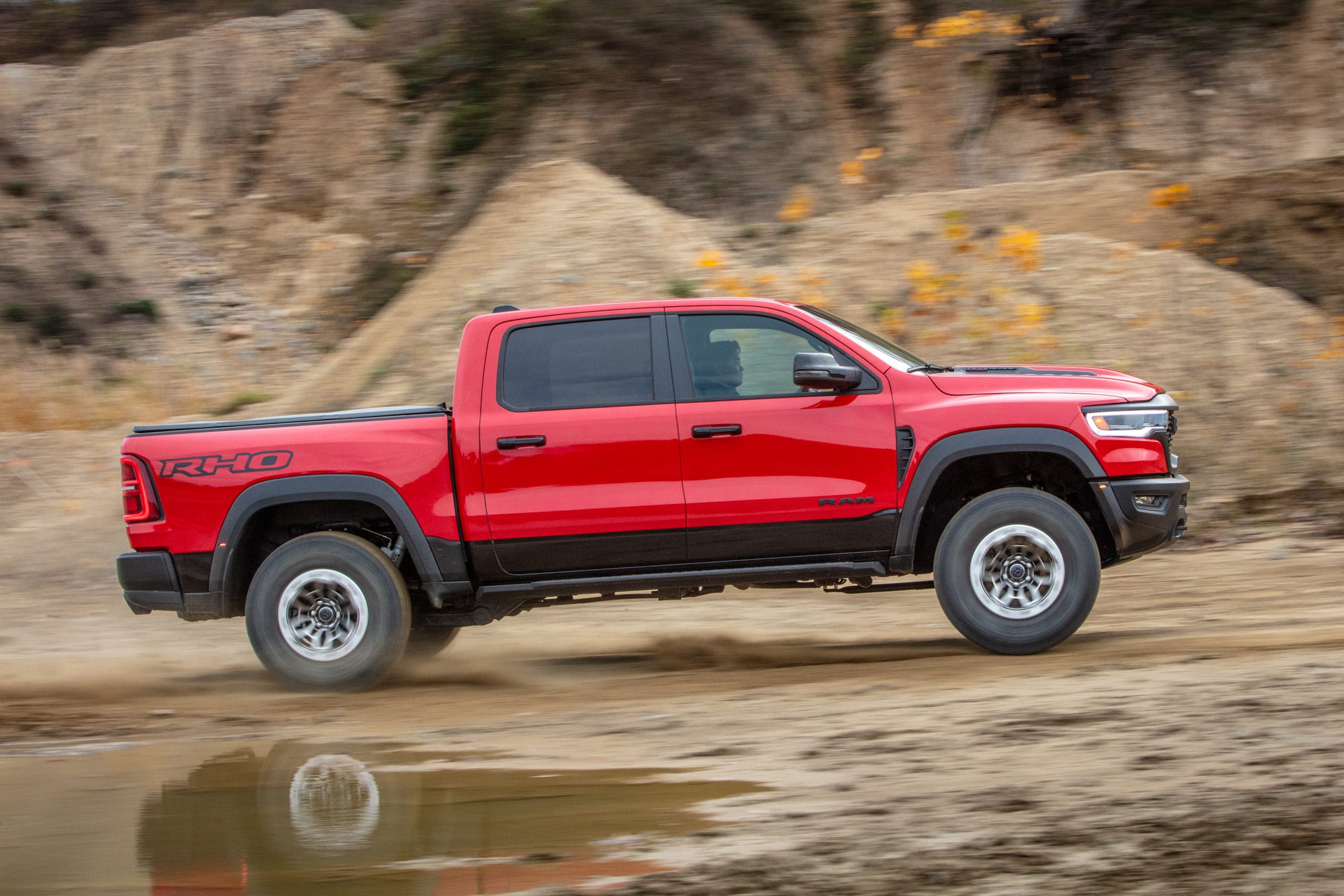The 4×4 truck remains a cornerstone of the American automotive landscape. Ranging from towering lifted giants to compact and affordable daily drivers, there’s a 4×4 pickup to suit nearly every requirement.
These trucks vary widely in size and configuration, so it’s crucial to evaluate factors such as the necessary horsepower, towing capacity, and expected fuel efficiency or MPGe.
Even though most 4WD trucks may never venture off-road, assessing the capabilities, advantages, and limitations of each model is essential in case the situation demands it.
Trucks With Best Off-Road Suspension
To understand how these vehicles compare to their rivals, here is our list of the best 4×4 pickup trucks of 2025, featuring both gasoline-powered and electric options.
Ram 1500
2025 Ram 1500 remains one of the most complete full-size pickup trucks available, offering an impressive blend of performance, comfort, and technology.
A significant change for this model year is the departure of the iconic HEMI V8 engine, now replaced by the more fuel-efficient Hurricane twin-turbo inline-six.
While some enthusiasts may miss the traditional V8 growl, the new engine options deliver more power and improved fuel economy.
The base trim comes equipped with a 3.6L V6 with eTorque, producing 305 horsepower and 269 lb-ft of torque, with a towing capacity of 8,110 lbs.
The 3.0L Hurricane twin-turbo inline-six offers 420 hp and 469 lb-ft of torque, towing up to 11,550 lbs, while the high-output version pushes out 540 hp and 521 lb-ft, towing 9,920 lbs.
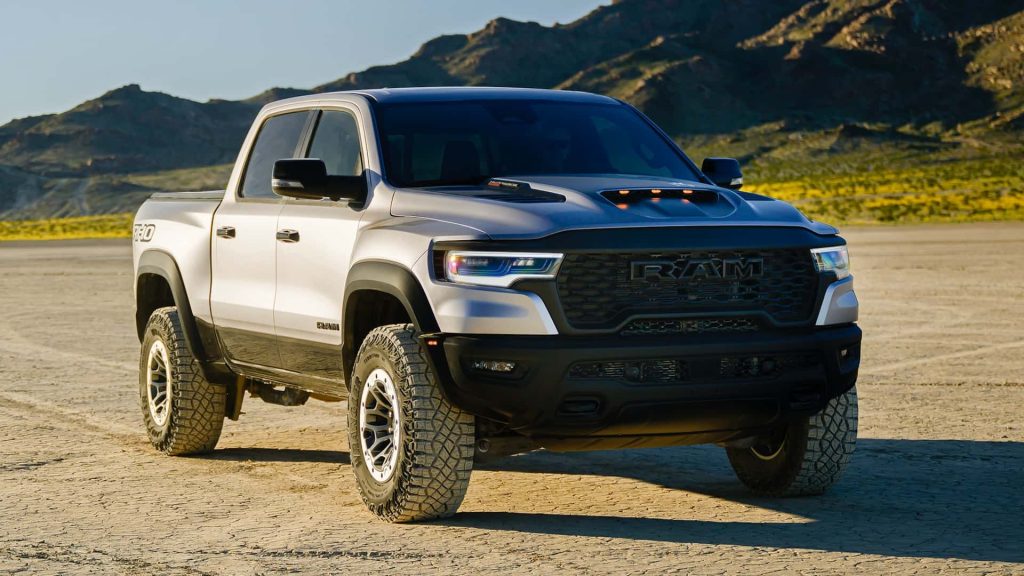
Inside, the Ram 1500 continues to set benchmarks in its segment with a luxurious, tech-packed cabin featuring premium materials, an optional 14.5-inch touchscreen, and massaging leather seats in the top trims.
The ride is exceptionally smooth for a truck, thanks to the available air suspension.
Off-road capabilities are equally strong, especially in the Rebel trim, which includes an electronic locking rear differential, skid plates, 33-inch all-terrain tires, hill descent control, and adjustable air suspension.
Also Read: 5 Pickup Trucks That Age Gracefully and 5 That Rust Prematurely
Toyota Tundra
The 2025 Toyota Tundra maintains its reputation as a dependable workhorse, now entering its third year since a comprehensive redesign.
Toyota has fully transitioned away from the V8, sticking with a twin-turbocharged V6 lineup that includes both standard and hybrid versions.
The standout performer is the i-Force MAX hybrid, which delivers 437 horsepower and an impressive 583 lb-ft of torque, ranking it among the most powerful options in the class.
Standard models come with a 3.4L twin-turbo V6 producing between 348 and 389 hp and up to 479 lb-ft of torque, with both variants capable of towing up to 12,000 lbs.
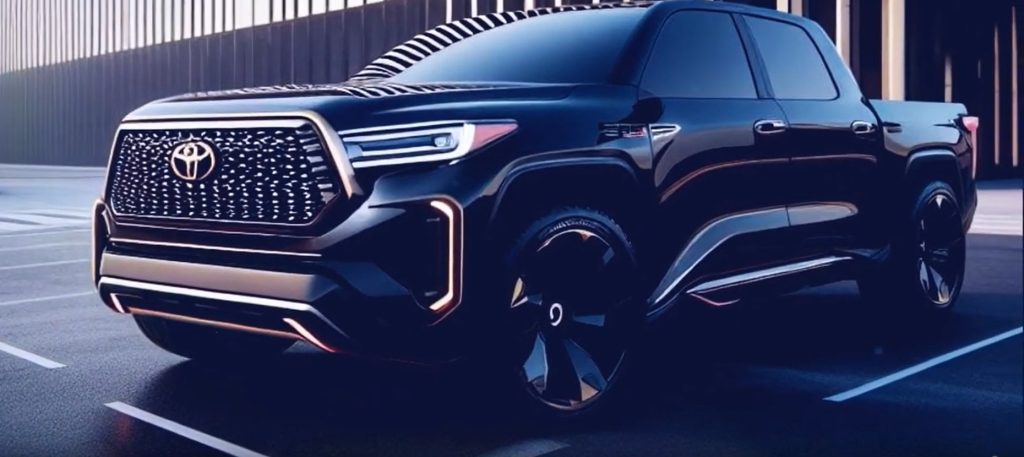
While the Tundra offers top-tier towing capabilities, its ride quality isn’t quite as refined as rivals like the Ram 1500, particularly on rough roads.
However, off-road enthusiasts will appreciate the TRD Pro model, which includes Fox shocks, a locking rear differential, crawl control, and Multi-Terrain Select with adjustable drive modes.
It also features 33-inch all-terrain tires and lifted suspension, reinforcing its serious off-road credentials. These upgrades make the Tundra TRD Pro one of the most capable 4×4 trucks on the market.
Ram 2500
The 2025 Ram 2500 stands out as a top-tier choice for buyers needing heavy-duty power and performance.
With a base price of $45,565, it offers two formidable engine choices: the standard 6.4-liter HEMI V8 producing 405 horsepower and 429 lb-ft of torque, and the high-output 6.7-liter Cummins turbo-diesel, which churns out 430 hp and a massive 1,075 lb-ft of torque.
These engines give the Ram 2500 up to 20,000 lbs of towing capacity, placing it well above most half-ton rivals.
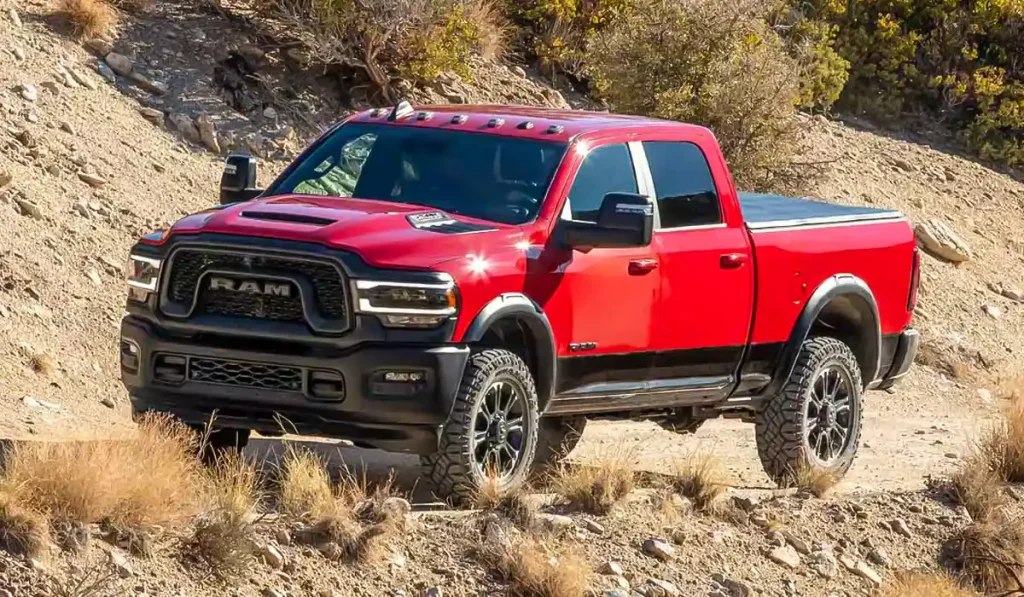
Despite its size, the Ram 2500 continues to excel in interior comfort and quality, especially in higher trims like the Limited and Longhorn.
These trims boast premium leather upholstery, real wood trim, and a 12-inch touchscreen that rivals those found in luxury SUVs.
However, its large dimensions can make everyday driving and parking a challenge, and the ride is stiffer compared to lighter-duty trucks.
The Power Wagon trim elevates its off-road game with front and rear locking differentials, a factory-installed WARN 12,000-lb winch, Bilstein off-road shocks, electronically disconnecting front sway bar, 33-inch all-terrain tires, and protective skid plates for rugged terrain.
Rivian R1T
The 2025 Rivian R1T continues to impress as one of the most capable and exciting electric trucks on the market, combining serious off-road ability with cutting-edge electric technology.
Available in dual-, tri-, and quad-motor configurations, the R1T offers a range of performance levels.
The base dual-motor AWD delivers 533 horsepower and 610 lb-ft of torque, while the performance version bumps output to 665 hp and 823 lb-ft.
The tri-motor setup brings 850 hp and 1,103 lb-ft, and the quad-motor version peaks at an astonishing 1,025 hp and 1,198 lb-ft of torque. All variants offer a towing capacity of 11,000 lbs.
The R1T’s 0-60 mph times range from 2.9 to 4.5 seconds depending on the configuration, and its estimated range stretches from 258 to 420 miles, depending on battery pack and motor choices.
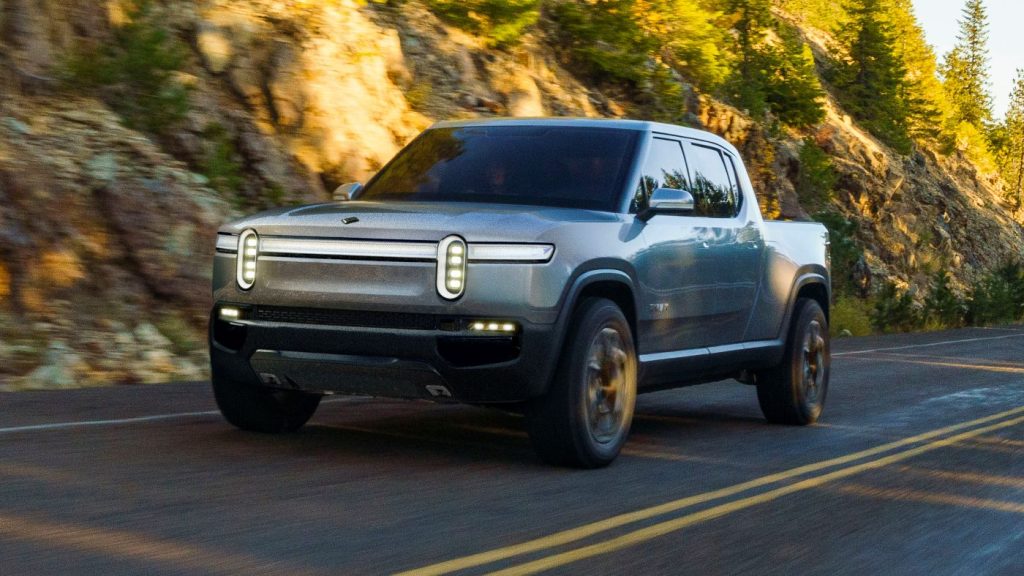
Although charging infrastructure especially in remote areas remains a challenge compared to refueling gas-powered trucks, the R1T’s capabilities are undeniable.
Inside, it features a stylish, well-appointed cabin packed with technology.
Off-road gear includes adjustable air suspension offering up to 14.9 inches of ground clearance, a tank turn function, reinforced underbody protection, and terrain-specific drive modes.
These features make the R1T a true trail-ready electric truck. Rivian has arguably positioned itself as one of the top electric vehicle companies today.
Although its lineup remains limited, the technology it offers is among the best in the industry, its vehicles stand out for their unique and premium design, and, unlike Tesla, Rivian’s brand reputation has remained mostly untouched by controversies surrounding its leadership.
While companies like Tesla aim to radically redefine what an electric truck looks like — as seen with the Cybertruck — Rivian has opted for a more understated and approachable design. The R1T carries a somewhat more traditional truck aesthetic compared to Tesla’s entry but still manages to look sleek and modern.
A big part of that appeal comes from its approachable front-end design, highlighted by Rivian’s now-signature oval headlights, which continue to look great.
Having driven the second-generation R1S previously, the reviewer found the R1T’s interior familiar. The two models share the same interior layout, though the R1T lacks the cargo space and third-row seating of the R1S.
Despite this, the R1T’s second row remains spacious, offering enough room to keep even taller adults comfortable. The interior is designed with a premium feel in mind, combining high-end leather with elegant wood trim and other quality materials.
The few buttons and dials that are present feel solid and tactile, complementing the sleek touchscreen controls. There are also many thoughtful storage compartments, retractable cup holders, and wireless charging pads for the front seats.
Although design preferences can vary from person to person, build quality is an objective measure — and the Rivian R1T excels in this area. The truck feels durable and solidly constructed, with a high-end appearance inside and out.
Also Read: 5 Engines That Never Burn Coolant and 5 That Always Need Top-Ups
Ram 1500 RHO
With the discontinuation of the Ram TRX, the 2025 Ram 1500 RHO steps in as a more efficient yet high-performance off-road truck.
Priced at $69,995, the RHO features the high-output 3.0-liter Hurricane twin-turbo inline-six, producing 540 horsepower and 521 lb-ft of torque.
Though it lacks the TRX’s supercharged V8, it rivals competitors like the Ford F-150 Raptor in both performance and off-road capability while offering better fuel efficiency with EPA ratings of 15 mpg city, 21 mpg highway, and 17 mpg combined.

Built for serious off-road adventures, the RHO comes with a wide-track suspension, Bilstein Black Hawk e2 shocks, 35-inch all-terrain tires, underbody skid plates, and a high-clearance front bumper.
The truck’s reinforced frame enhances stability at high speeds, and its electronic locking rear differential boosts traction in tough conditions.
The RHO retains the upscale cabin of the standard Ram 1500, complete with an optional 14.5-inch touchscreen, high-end materials, and bolstered seats suited for off-road driving.
This makes the RHO a true desert runner while preserving luxury and comfort.
Trucks With Harsh Ride
You shouldn’t have to sacrifice quality when looking for the most reliable used trucks.
However, with so many automotive brands and decades’ worth of vehicles to consider, figuring out where to start and what to watch out for can be overwhelming.
That’s why we’ve created this insider’s guide to help you navigate the ones you should avoid. With this guidance, you’ll be better prepared to make a confident, informed decision in today’s used truck market.
Now that you’re familiar with our recommendations for the best-used trucks to buy, it’s equally important to be aware of which models to steer clear of.
Our top five list of used trucks to avoid is based on poor ratings, widespread vehicle issues, negative reviews, and frequent consumer complaints.
2006 Nissan Titan
The 2006 Nissan Titan, along with the rest of its first-generation lineup, is considered one of the worst used trucks to purchase due to its extensive equipment-related problems.
It was subject to seven NHTSA recalls involving the electrical system, fuel system, suspension, engine/engine cooling, and rear door latch.
In addition, many consumers reported that the brakes were inadequate for towing up to its maximum capacity of 9,400 lbs.
Frequent complaints cited brake warping and overheating under heavy loads and prolonged braking, which created safety concerns.
The 2006 Nissan Titan, starting at $23,400, is a full-size truck designed to offer power, space, and practicality. It measures 224.2 inches in length, 78.8 inches in width, and stands 75 inches tall.
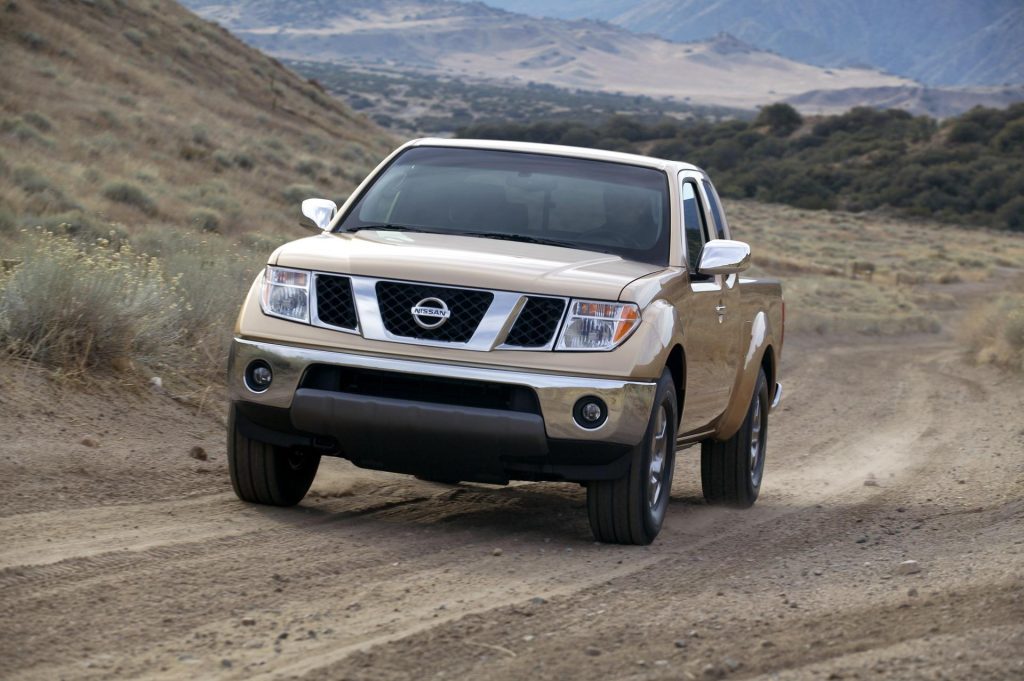
Although the wheelbase is not specified, the vehicle offers seating for up to six passengers. Cargo capacity is not listed, but the truck provides generous interior dimensions with a front headroom of 41 inches and rear headroom of 38.9 inches.
The front legroom measures 41.8 inches, while the rear legroom is 33 inches. Shoulder room is equally spacious, with 65.1 inches in the front and 64.9 inches in the rear.
The Titan has a curb weight of 4,837 lbs and is powered by a 5.6-liter V8 engine. This particular model, the XE 2WD King Cab, delivers 305 horsepower at 4,900 RPM and 379 lb-ft of torque at 3,600 RPM.
It uses unleaded fuel and comes with an automatic transmission. Although the class and driving range are not specified, the vehicle runs on a rear-wheel-drive (RWD) drivetrain and has a V-type cylinder configuration with a total of eight cylinders.
Engine size is unspecified, but the truck has a ground clearance of 9.7 inches and a Gross Vehicle Weight Rating (GVWR) of 6,422 lbs.
The Titan offers a payload capacity of 1,587 lbs, though its towing capacity is not provided. In terms of fuel efficiency, the standard mileage is rated at 14 mpg in the city and 19 mpg on the highway.
The transmission type is automatic, ensuring a smooth driving experience. Overall, the 2006 Nissan Titan XE 2WD King Cab combines robust performance and ample space, making it a solid choice for those in need of a reliable and capable truck.
2007 Toyota Tundra
Among all model years of the Toyota Tundra, the 2007 version experienced the highest number of reported issues.
The bulk of customer complaints revolved around engine-related problems especially the failure of the secondary air injection pump, which averages around $1,900 to repair.
The NHTSA documented 14 recalls related to several areas including vehicle speed control, wheels, tires, steering, visibility, powertrain, and equipment.
After enduring years of criticism for producing full-size trucks that didn’t quite measure up to their competitors, Toyota finally addressed those concerns by significantly expanding the Tundra’s size and power.
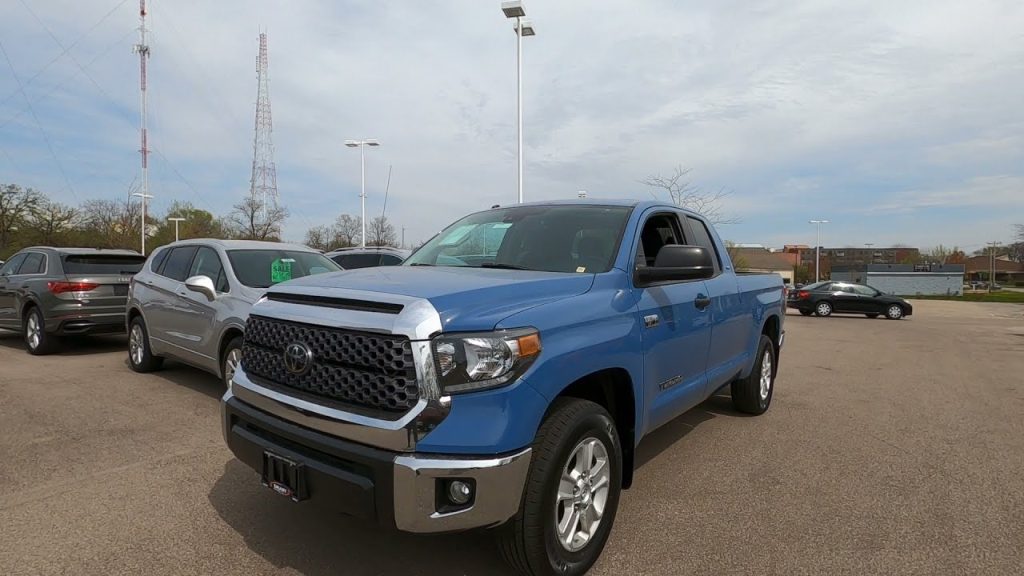
Responding to the perception that the original Tundra was more of a light heavyweight in a division of true heavyweights, Toyota not only enlarged the truck’s dimensions and engine offerings but also invested in a brand-new manufacturing facility located deep in Texas—an unmistakable commitment to doubling production to meet anticipated demand.
While the Tundra’s initial reception was tepid, its popularity steadily increased, culminating in nearly 200,000 units sold last year.
The Tundra comes in three configurations: standard, Double Cab, and crew-cab body styles. These options are a clear move to silence critics who had previously labeled the Tundra as undersized among full-size pickups.
Toyota’s introduction of the robust 5.7-liter V-8 engine, paired with a six-speed automatic transmission, further quells any remaining complaints about underwhelming performance.
Out of the 44,824 miles logged, roughly 22,000 were racked up while towing various loads—showcasing the Tundra’s capability.
Some team members advocated for the CrewMax version, drawn to its cavernous interior and ample storage. However, the editor-in-chief was adamant that the CrewMax was simply “too damned big.” As a compromise, the team opted for the Double Cab model.
This version still features four doors, though the rear doors are smaller and the backseat area, while still adequate for adult passengers, lacks the enormous interior space of the CrewMax.
Pricing for a base standard-cab Tundra with a 4.0-liter V-6 starts just over $23,000. As is typical for full-size pickups, costs climb quickly when adding cab space, four-wheel drive, and more powerful engines. The team chose the SR5 trim level, which includes cloth seats and no high-end tech or navigation features.
Nevertheless, they couldn’t resist the 5.7-liter V-8, generating 381 horsepower and 401 pound-feet of torque, which added $1,260 to the cost. With four-wheel drive and a $645 destination charge, the total price came to $31,805.
Additional features and upgrades included a $605 package with a power-adjustable driver’s seat, a tilting and telescoping steering column, a large center-console storage bin, a trip computer, and adjustable headrests.
They also added a six-disc AM/FM audio system for $200, a sliding rear window for $345, $60 mudguards, heated power mirrors for $30, a cold-weather package at $100, and a set of 18-inch aluminum alloy wheels for $910.
All of this brought the grand total to $34,055—roughly in line with a similarly equipped Chevrolet Silverado extended cab outfitted with the optional 367-hp, 6.0-liter V-8 engine.
Delivery of the Tundra took place in June 2007, and the team surpassed the 40,000-mile benchmark in just 11 months. Their experience was largely trouble-free. The truck made three round trips between Ann Arbor and California, as well as excursions to Mid-Ohio, Watkins Glen, and other racing destinations throughout the Midwest.
During all this heavy-duty use, only one mechanical issue required an unscheduled service stop. That issue—a dashboard suddenly illuminated with warning lights—occurred multiple times but did not indicate a serious problem.
Apart from temporarily losing cruise control functionality, the truck continued to operate normally. A visit to a local Toyota dealer confirmed this, with diagnostics revealing no faults; the warning lights were reset, and the service was provided free of charge.
Over the course of ownership, the Tundra underwent eight scheduled maintenance visits, primarily for oil and filter changes, tire rotations, and standard inspections.
Of course, powering a large truck with a high-output V-8 takes a toll on fuel efficiency. The EPA estimates the Tundra at 14 mpg in the city and 18 mpg on the highway.
Given the heavy loads it frequently carried, the team wasn’t surprised when the truck averaged just 13 mpg without a trailer and 12 mpg when towing. The fuel expenses for the entire test period totaled $13,600.
In summary, aside from a few episodes of puzzling warning-light activity, the Tundra performed reliably. However, it wasn’t without its criticisms. Some team members thought the truck was simply too large for comfort, though this likely reflects personal preference more than design flaw.
Other critiques centered around the quality of the interior materials, particularly the tweed-style cloth upholstery, which could benefit from improved stain resistance.
A few drivers also noted that certain secondary controls were awkwardly positioned, and the audio system was broadly disliked. One reviewer summed it up bluntly: “No crispness,” they wrote, “and a ton of bass that the speakers can’t handle. Awful!”
2008 Nissan Frontier
The 2008 Nissan Frontier became notorious for transmission issues. One of the most serious problems involved radiator coolant leaking into the automatic transmission, ultimately leading to early transmission failure.
These repairs were especially expensive, making it a risky purchase for anyone seeking a dependable used truck without unexpected and high-cost maintenance.
The 2008 Nissan Frontier pickup is built on the same platform as its larger sibling, the Nissan Titan.
While it doesn’t fall into the full-size category, it’s best categorized as a mid-size truck, as it’s larger than older compact pickups like the previous Nissan models or the Ford Ranger but still smaller than the Titan.
Stylistically, the Frontier blends crisp, straight lines with more refined, carlike curves, particularly noticeable around the prominent chrome-bar grille and along the lower edges of the side-rear windows.

Inside, the cabin is accented with grey plastic and orange trim. Although the interior plastics and fabrics appear to be on the cheaper side, the overall layout is simple and intuitive.
For power, the 2008 Nissan Frontier offers two engine choices. The standard 2.5-liter four-cylinder engine generates 152 horsepower, while the available 4.0-liter V-6 delivers a much stronger 261 horsepower. Transmission options include either a five- or six-speed manual or a five-speed automatic.
Fuel economy depends on the configuration, ranging from 19 mpg city and 23 mpg highway with the manual-equipped four-cylinder models, down to 14 mpg city and 19 mpg highway with the automatic V-6 versions.
Performance varies accordingly: the four-cylinder engine struggles somewhat under the Frontier’s increased weight and size, while the V-6 provides confident, capable acceleration, particularly on highways.
The V-6 pairs exceptionally well with the five-speed automatic transmission, which responds promptly and smoothly when extra power is required.
Buyers can choose between rear-wheel drive and four-wheel drive configurations, and the Frontier is offered in two body styles: the four-door King Cab and the Crew Cab. The King Cab version includes small, rear-hinged access doors and flip-up rear seats.
This setup provides limited rear seating space—suitable for children or, in a tight situation, two adults. On the other hand, the Crew Cab comes with full-sized, front-hinged rear doors and a bench seat, offering SUV-like room in the rear.
Entry and exit are straightforward, and two adults can ride comfortably in the back on longer trips. The driver’s seating position is upright and favorable, and the seats are among the most comfortable found in compact pickups.
Practicality is enhanced by a “high-utility” pickup bed that comes equipped with a factory-applied spray-in bed liner and the versatile “Utili-track” cargo tie-down system.
However, the longest bed available is six feet, which might slightly limit its heavy-duty hauling capabilities. That said, the 2008 Nissan Frontier is capable of towing up to 6,500 pounds.
Additional off-road features underscore the Frontier’s adventurous side. Hill Start Assist and Hill Descent Control come standard, reinforcing the truck’s off-road readiness.
For those seeking even more rugged capabilities, the NISMO off-road package is worth considering. It includes skid plates, an upgraded suspension system with Bilstein shocks, an electronic locking rear differential, and aggressive, knobby tires designed for challenging terrain.
2012 RAM 2500HD
If you’re uncertain about which used trucks to steer clear of, the 2012 RAM 2500HD should be on your radar.
This heavy-duty pickup became infamous for what’s often called the “death wobble.” Drivers experienced severe and uncontrollable vibrations often described as so intense that steering control was nearly lost.
Ram continues to refine its medium-duty 2500 series for the 2012 model year, introducing several updates aimed at enhancing performance and utility.
The most significant change to the 2012 Ram 2500 is a 150 lb-ft torque increase to its Cummins Turbodiesel inline-six engine, raising its output to 800 lb-ft when paired with the automatic transmission. Manual transmission versions retain the previous rating of 650 lb-ft.
In addition to the power upgrade, Ram introduces several smaller enhancements across the 2500 lineup.
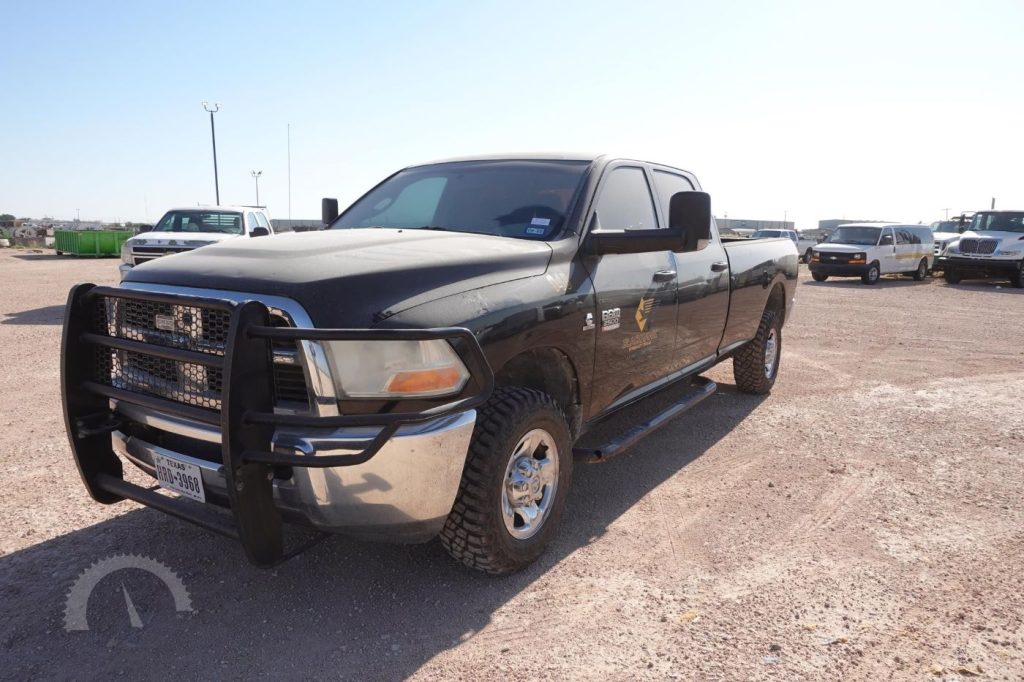
These include a standard electronic trailer brake controller on SLT, Outdoorsman, Power Wagon, Laramie, and Laramie Longhorn trims, a new blacked-out front end for the ST models, and a redesigned steering wheel that is now standard on all versions. The 2012 Ram 2500 caters to a wide range of buyers with an extensive variety of configurations.
Engine options include a 5.7-liter Hemi V-8 producing 383 horsepower and 400 lb-ft of torque mated to a six-speed automatic transmission, and the 6.7-liter Cummins turbodiesel I-6, which generates 350 horsepower and 650 lb-ft of torque with a six-speed manual, or 800 lb-ft of torque with the available six-speed automatic transmission.
Buyers can choose from three cab styles—Regular Cab, Crew Cab, and Mega Cab—and two bed lengths: 6’4″ and 8’0″. Four-wheel drive is available across all trims except the Power Wagon, where it comes standard.
The Ram 2500’s body style is that of a traditional pickup truck, with bold styling and the ability to be tailored to fit a wide variety of needs.
Engine choices include the 5.7L V-8 and the 6.7L turbodiesel I-6. Transmission options include a six-speed manual and a six-speed automatic.
Available trims in the 2012 Ram 2500 lineup include the ST, SLT, Outdoorsman, Lone Star, Big Horn, Laramie, Laramie Longhorn, and Power Wagon models.
Among the changes Ram introduces for 2012, the most notable is the 150 lb-ft torque increase for the Cummins Turbodiesel I-6 when equipped with an automatic transmission—bringing the total to 800 lb-ft (manual versions remain at 650 lb-ft).
Additional minor updates include the standard trailer brake controller on upper trims, a black front grille for ST models, and a new steering wheel design across all models.
The Ram 2500 maintains its strong presence in the pickup segment with its bold design and versatile setup options. It is offered in three cab styles—Regular, Crew, and Mega Cab—the last being the most spacious. Bed length options include the standard 6’4″ and the extended 8’0″.
The Power Wagon variant stands out with off-road upgrades such as a raised suspension, 33-inch all-terrain tires, a 12,000-pound Warn winch mounted to the front bumper, and a distinctive two-tone paint scheme complemented by Power Wagon graphics.
Inside, the 2012 Ram 2500’s cabin ranges from utilitarian in the base ST model to highly styled and themed in the top-tier Laramie Longhorn.
The Laramie Longhorn’s interior features a Texas-inspired design that includes brushed aluminum trim, faux barbed wire accents, and seat-back pockets with decorative belt buckles.
Practicality is also a highlight of the cabin, which offers thoughtful storage features such as in-floor bins located in front of the second row, a generously sized center console, an extra glove box, and the optional RamBox storage compartments integrated into the bed’s side rails.
2016 Toyota Tacoma
Regrettably, the 2016 Toyota Tacoma earned its place on this list due to frequent complaints of excessive road noise and vibrations.
Owners found the driving experience uncomfortable, especially on long-distance trips, describing it as tiring and nearly unbearable over extended periods.
The 2016 Toyota Tacoma received a comprehensive redesign that introduced a new V-6 engine, a new automatic transmission, and an updated infotainment system.
Positioned below the full-size Tundra in Toyota’s lineup, the Tacoma is classified as a midsize truck and is available in rear-wheel-drive or four-wheel-drive configurations. It also offers two cab styles and two bed lengths, providing flexibility for various needs.
Under the hood, the 2016 Tacoma offers two engine choices. The base engine is a 2.7-liter inline-four that delivers 159 horsepower and 180 lb-ft of torque. The new engine is a 3.5-liter V-6 that produces 278 horsepower and 265 lb-ft of torque.
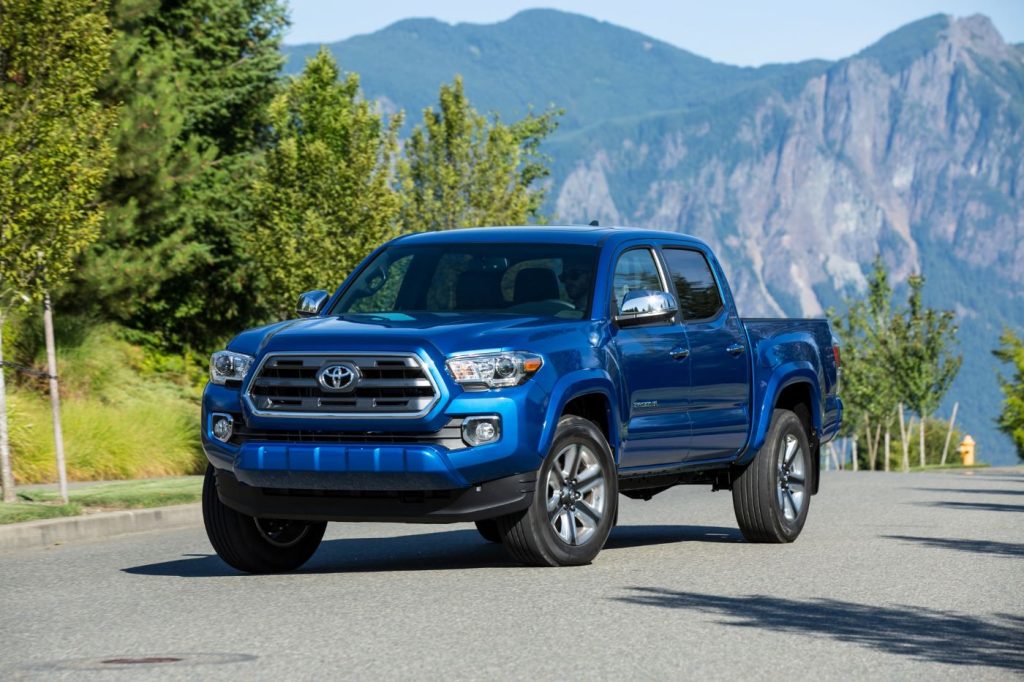
Both engines can be paired with a six-speed automatic transmission, while the V-6 is also available with a six-speed manual. When properly equipped with the V-6 Tow Package, the Tacoma is capable of towing up to 6,800 pounds.
Safety features in the 2016 Tacoma include dual front airbags, front-side airbags, side curtain airbags, and knee airbags for both the driver and front passenger. Optional safety technology includes a blind spot warning system with rear cross-traffic alert.
The base model of the 2016 Tacoma comes with a range of standard features, including cloth upholstery, a four-way adjustable driver’s seat, the Entune infotainment system with a 6.1-inch touchscreen, Bluetooth connectivity, a rearview camera, Siri Eyes Free, a USB port, and a six-speaker audio system.
Higher trim levels upgrade the interior with features like built-in navigation, the Entune smartphone app suite, a larger seven-inch touchscreen, and a JBL premium audio system.
In a First Drive review, the Tacoma was praised for its excellent steering feel, which quickly returns to center, and its improved interior quality.
The cabin is quieter, and the build quality is more solid, enhancing the overall on-road experience. However, the brake pedal was noted to be overly sensitive, engaging early in its travel.
The SR5 trim’s ride quality off-road was found to be somewhat bouncy on rough surfaces, and TRD models were noted to produce more tire noise on pavement than the SR5.
Despite this, the new 3.5-liter V-6 engine and six-speed automatic transmission were regarded as a major improvement over the outgoing powertrain.
The engine revs freely to its redline, and the transmission confidently holds gears in manual mode without hesitation.

